This page contains paid links (details here) as well as links to the official ReptiFiles store. Purchases made from these links help fund my reptile welfare research and educational efforts. Thank you for your support!
Blue Tongue Skink Enclosure Size Requirements
A blue tongue skink enclosure needs to be big enough to provide enough space for appropriate mobility along the horizontal and vertical planes, as well as to facilitate a proper temperature gradient while accommodating appropriate life support equipment (lamps, misters, humidifiers, etc.). According to my observations, this cannot be accomplished in anything smaller than 3x the lizard’s total length and 18″ / 45cm tall.
This means that any permanent blue tongue skink enclosure must provide at least 12 sq ft / 1.1 sq m of floor space and at least 18″ of height. At least 24″ / 60cm of height must be provided if heating and lighting equipment is mounted inside the enclosure.
Remember: Bigger is always better, as long as you use the space well. Even established juvenile blue tongue skinks can be housed in an adult-sized enclosure as long as they have lots of hiding places to help them feel secure. (For more info on creating hides, visit the Environmental Enrichment portion of this guide.)
Why such a large enclosure for just one blue tongue skink?
You may have noticed that the ReptiFiles’ standard for the minimum blue tongue skink enclosure size is different from most sources. The thought of requiring a 6x2x2 enclosure or larger for a single lizard may seem unreasonable, and even disheartening if you’re keeping your pet in a 4x2x2 and thought that you were already following best practice.
Once upon a time, a 36″L x 18″W x 18″H enclosure was thought to be plenty of space for a blue tongue skink, despite the fact that they are thick-bodied, fairly active lizards capable of growing up to 24″ long. This minimum standard was raised to 48″L x 18″W x 21″, and then 48″L x 24″W x 24″H as it became apparent that the former standards were inadequate for meeting a blue tongue skink’s basic needs for thermoregulation and exercise in captivity. Now, after observing that the 4’x2’x2′ standard is still not quite meeting pet blue tongue skinks’ needs, it’s time to raise the bar yet again.
ReptiFiles’ current minimum for blue tongue skinks still pales beside other widely-accepted sources of best practice in reptile housing. According to the Federation of British Herpetologists’ 2022 update to minimum housing for reptiles, members of the Tiliqua genus should have an enclosure which measures at least 6x4x3 SVL, or roughly 6’L x 4’W x 3’H. The German Society for Herpetology and Terrariums, makes the same recommendation for floor space.
Although I would like for ReptiFiles’ minimum recommendation to be more in agreement with these authorities, I have to take into consideration that 36″x18″x18″ is still widely practiced in the USA and some new keepers still struggle with the 4’x2’x2′ standard. This 12-square-foot minimum is my attempt at a “compromise” which pushes USA blue tongue skink keepers toward a better standard without shocking the system too much.
As the United States improves in its standard of care for blue tongue skinks, I intend to revise the housing standards in this care manual again.
ReptiFiles-approved enclosures for blue tongue skinks:
Kages (with the “2 square screens” top option) (ReptiFiles Review – 4⭐)
Zen Habitats (read the ReptiFiles Review)
Toad Ranch Luxury Reptile Habitats (ReptiFiles Review – 5⭐!)
Can 2 or more blue tongue skinks be housed together?
Never house more than one blue tongue skink per enclosure. Blue tongue skinks are well known to be territorial, whether male or female. Forcing them to share space, especially within the relatively narrow confines of a pet situation, is likely to result in violent conflicts which will injure and may even kill one or both skinks.
I promise your pet will not get lonely without a roommate! But if possible, position the enclosure in a relatively mainstream area of house where s/he can watch you. Skinks like to watch you just as much as you like to watch them!
Keep reading about blue tongue skink care:
- Introduction to Blue Tongue Skinks
- Shopping List
- Tiliqua Species & Subspecies
- Enclosure Size Requirements
- Lighting, Temperatures & Humidity
- Substrate Options
- Environmental Enrichment: Decorating Your Enclosure
- Feeding Your Skink
- Handling Tips
- Diseases & General Health Information
- Additional Resources
